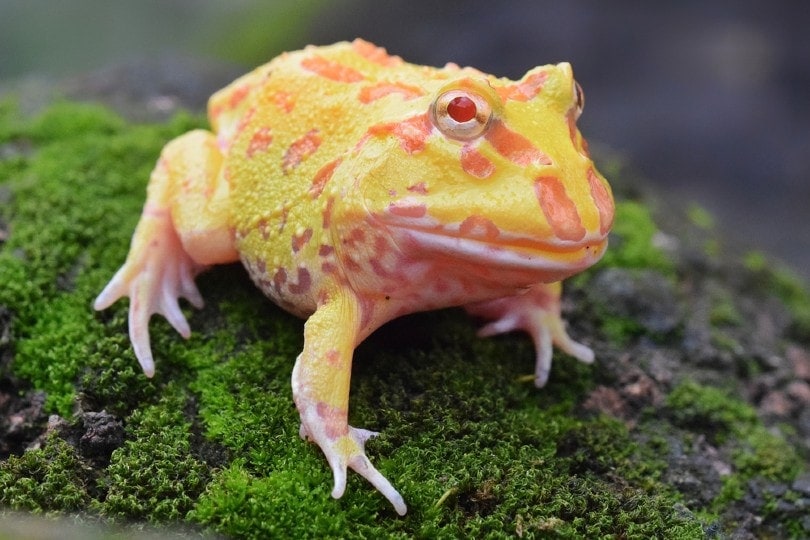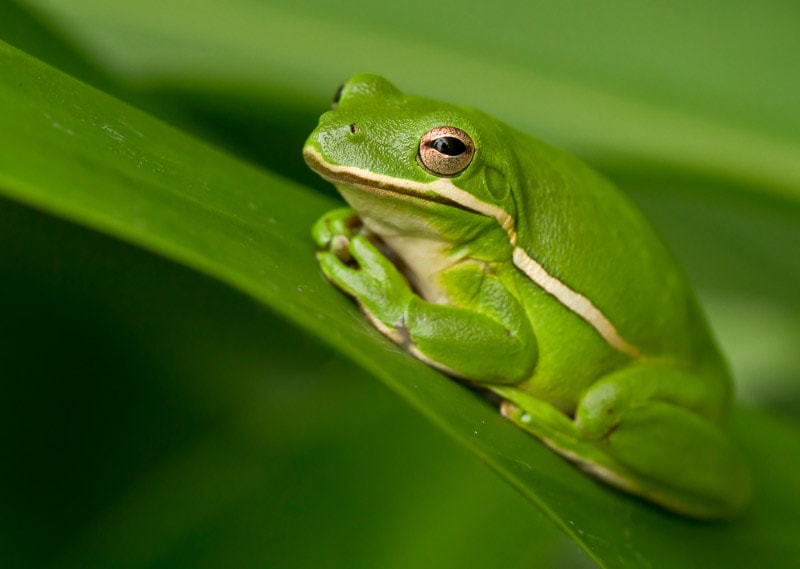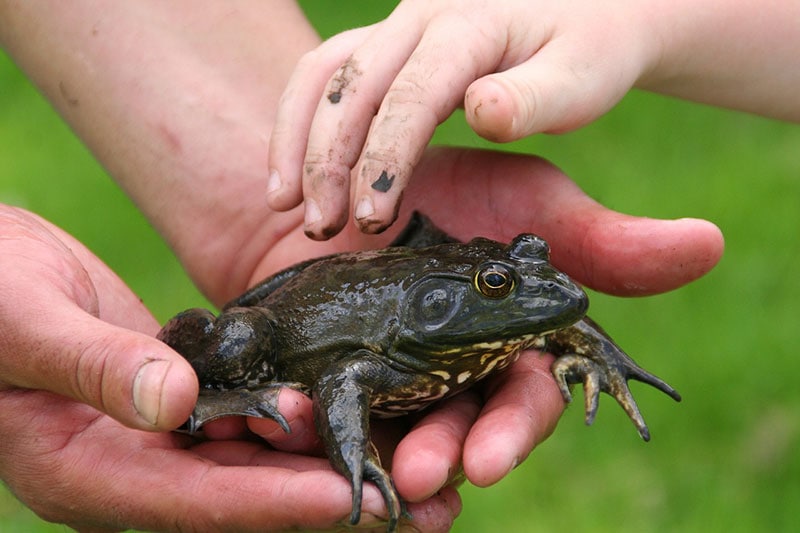16 Facts About Toads: Appearance, Origin, Singing & More

Updated on
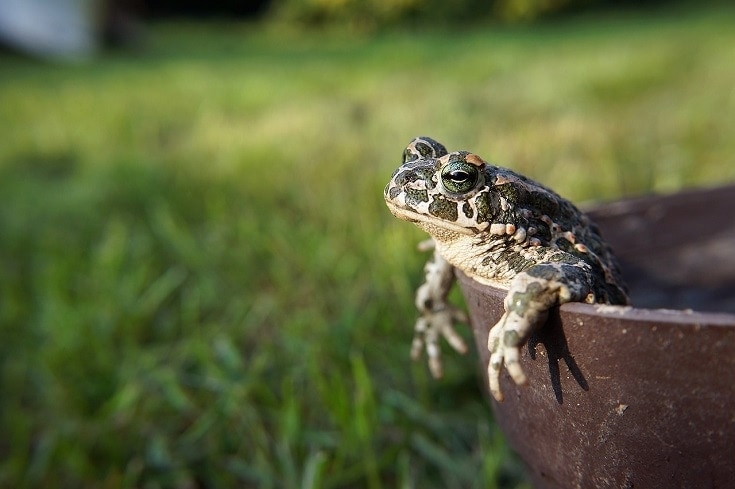
Toads don’t get much love from mass media, cartoons, or fairytale books. They’re mostly pictured as evil, demonic creatures that bring misfortune into the world. However, real-life toads are truly fascinating creatures. They can breathe and drink water through their skin, release toxins to push predators away, and eat up to a thousand insects per day.
Oh, and touching a toad won’t cause warts—that’s a myth. Toads are a vital part of the ecosystem and deserve to be recognized. So, join us, and let’s learn more about these amphibians, including their mating rituals, eating habits, singing voices, and differences compared to frogs. After that, we’ll talk about toads as pets and whether they’re a good pick or not.

The 16 Facts About Toads
1. Toads Are Spread Across the Globe
These resilient creatures live on all continents except for Antarctica. You’ll find them in the US, Canada, Latin America, the EU, and most of Asia and the Middle East. The only places where toads haven’t been noticed in large numbers are Madagascar, New Zealand, and New Guinea. These islands are full of frogs, yet you’ll have a hard time finding a toad there.
All three islands are isolated, and that partially explains why the toad numbers there are either very limited or next to none.

2. They Are 500+ Toad Species in the World
Toads come in all shapes and sizes, and while the exact number varies a bit depending on the classification, there are currently more than 500 toad species known to humanity. Just like frogs, they hatch from eggs and turn into tadpoles (both extremely toxic). It all starts in water, but once toads reach maturity (after 4–8 weeks), they mostly prefer to live, hunt, and mate on land.
3. These Amphibians Eat Hundreds of Insects per Day
Toads have quite an appetite and use long, sticky tongues to catch their prey from afar. The average male or female can easily chew on up to 1,000 insects per day, which is quite an impressive feast. Now, unlike frogs, these creatures aren’t that great at jumping, which is why they mostly prefer to stalk their food instead of running (or leaping) after it.
4. Juveniles Shed Their Skin Twice a Month…and Eat It
For reptiles and amphibians, shedding of the skin is nothing out of the ordinary. They do that to get rid of the hardened “armor” and be able to breathe easily again. This process is known as “molting”. And, just like many lizards, toads eat their own dead skin. A quick note: older toads say goodbye to their old shell 3–4 times a year. Younger amphibians do it a lot more often.
Depending on the species, age, and environment, you should expect this to happen 1–2 times a month.
5. Toads Release Poison and Carry Diseases
Have you noticed the dots on a toad’s body that look like warts? They release poison whenever a threat is around, and it can be quite harmful to snakes and other predators. But don’t worry: this poison isn’t strong enough to harm a human (unless it gets in your eyes). The same can’t be said about the infectious bacteria carried by toads, though. More specifically, we’re talking about Salmonella.
Native Americans used to put it into their arrows. Nausea, vomiting, fever, and diarrhea are the most common symptoms. They usually go away in 24–72 hours, but sometimes, this disease can lead to severe consequences. This is especially true for seniors, children, people with weak immune systems, and pregnant women. So, don’t forget to wash your hands thoroughly after handling a pet toad!

6. They Cover Themselves in Urine to Become Unappetizing
As you can imagine, the poisonous fluid that toads produce from their parotid glands and skin doesn’t taste that great. But it serves as a great deterrent against predators that want to eat them. And that’s not the only nifty survival tactic in a toad’s arsenal. Since certain snake species aren’t afraid of the poison, toads have to cover themselves in urine to avoid being eaten.
They only do that when facing great danger, though. In most cases, the toxins are enough to keep toads alive and well.
7. These Creatures Bloat and Play Dead to Scare Predators Away
But what if the poison and the urine don’t work on a big, scary falcon, vulture, or raccoon? Toads have a remedy against that as well! These amazing amphibians are capable of puffing themselves up to get bigger. As a result, it becomes harder for a predator to eat the toad. A smaller animal, in turn, might get a bit confused or even scared by the bloated creature.
Lastly, a toad might pretend to be dead to try and throw predators off. Now, this trick doesn’t have a 100% success rate: toads do get eaten. However, when combined with a toad’s witty mind, quick reflexes, and all the other techniques that we just discussed, it does mostly work.
8. Touching a Toad Won’t Cover Your Hand in Warts
Many people believe that touching a toad will cover them in warts. Even if you do that for a split second, it will still happen! But we’re happy to say that this old “scary story” is very far from the truth. As mentioned, the poison excreted by toads is mostly harmless to humans. It’s just not strong enough to penetrate our skin. You should only be worried about the bacteria carried by these amphibians.
And, as long as you’re quick to wash your hands after playing around with a toad, the infection won’t be able to cause any harm.
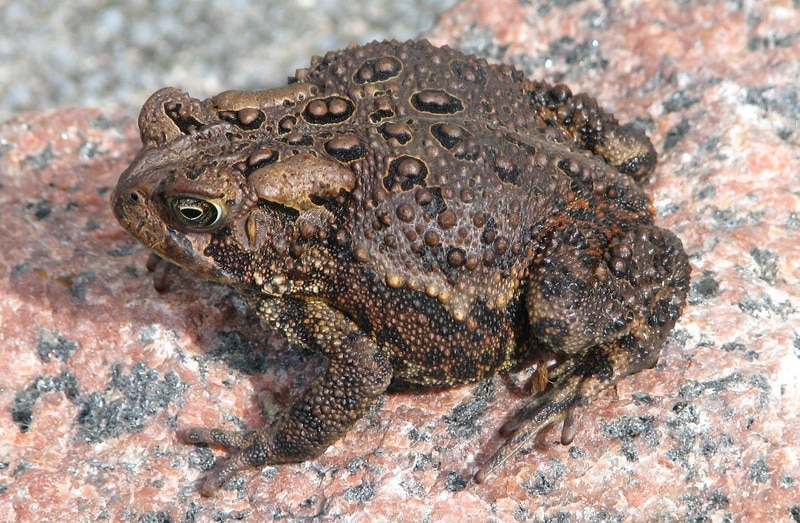
9. Toads Don’t Ribbit; They Sing Instead
If you’ve ever heard a frog making croaking sounds, you’ll never mistake it for anything else. However, in contrast to another popular belief, toads don’t ribbit. Instead, they call out to each other using their singing voices. For example, males sing to females during the mating season, inviting them to breed. You can hear their beautiful voices if you go into the woods early in the morning on a hot, sunny day.
10. They Have a Fascinating Mating Ritual: Amplexus
Female toads lay quite a lot of eggs during their lifetime (up to 30K). For that, they enter a pond and wait for a male to join them in a position known as amplexus. It’s when the male embraces the female from the back and waits for her to release the eggs. Once that happens, the male fertilizes every single egg via his milt. This process can take hours, if not days, to complete.
11. During the Cold Months, Toads Hibernate
This is a habit that toads share with fellow amphibians and reptiles. Since all these creatures can’t function properly during the harsh winter days, they prefer to sleep it out. That said, some toads, frogs, and lizards are known to wake up from a long sleep for short periods when it gets warm enough. But they usually go back to sleep rather quickly. Also, it’s not rare for frogs to spend most of the winter in ponds.
This only applies to areas with a warm climate, of course. They just “hit the brakes” and do everything slowly to conserve energy. And, once spring takes over, the frogs go back to their normal selves. As for toads, they like to hibernate while buried deep into the dirt to escape below-zero temps. Also, they are nocturnal creatures and prefer to hunt when the moon is up, and the sun is down.

12. They Consume Water and Breathe Through Their Skin
If you’re new to the whole having a toad as a pet thing, you might be worried that it doesn’t drink any water. But that doesn’t mean your new friend is sick. Toads have a cool ability to absorb water through their skin (or, rather, a seat patch located in the abdomen) without having to use their mouths. And, just like most amphibians, they can do the same trick with breathing.
Sadly, that’s only possible when the skin is wet. When a toad goes completely dry, it loses its capacity to breathe and dies. So, make sure it has 24/7 access to fresh water!
13. They Play an Important Role in Nature
One might think that toads are mere pests and don’t do anything good for the planet. But that couldn’t be further from the truth. Toads eat pests on an industrial scale: without their efforts, the insect population would’ve gone out of hand. They help Mother Nature keep a balance and avoid ecological catastrophes. This is a task that other amphibians can’t handle without toads.
More than that, by gobbling every single pest they see, toads do a fantastic job of protecting plants and crops from being ravaged.
14. Cane Toads Are Big, Poisonous, and Edible
These guys are the biggest and strongest toads in the bunch and can easily reach nine inches in length. They are native to the Americas and were deliberately brought to Australia to deal with the local beetles that used to wreak havoc on local sugarcane fields. Unfortunately, while the toads did, to some extent, solve the issue, today, they’re classified as an even bigger pest problem.
Right now, there are up to 1.5 billion cane toads in Australia. These amphibians are also more toxic compared to the smaller toads. That said, there’s a statue of a cane toad called Buffy in Sarina (Australia). Also, some local chefs have been adding toad legs to exotic dishes. When prepared by a professional, they are, indeed, edible.
15. Toads Lack Teeth Yet Have a Diverse Diet
Toads don’t have any teeth in their mouths. So, unlike frogs, they can’t chew on their prey: instead, they have to swallow it whole. Therefore, if you have a pet toad and it tries to bite you (yes, they do that sometimes), it won’t at all hurt. On the bright side, they have long, sticky tongues for reaching out and grabbing a worm or two.
Speaking of the toad diet, they mostly eat worms, mealworms, ants, crickets, slugs, bees, flies, snails, and spiders. Sometimes, they can even munch on small rodents (like field mice) and reptiles. Also, it’s not rare for these creatures to find their way into dog bowls and enjoy a pup’s food!
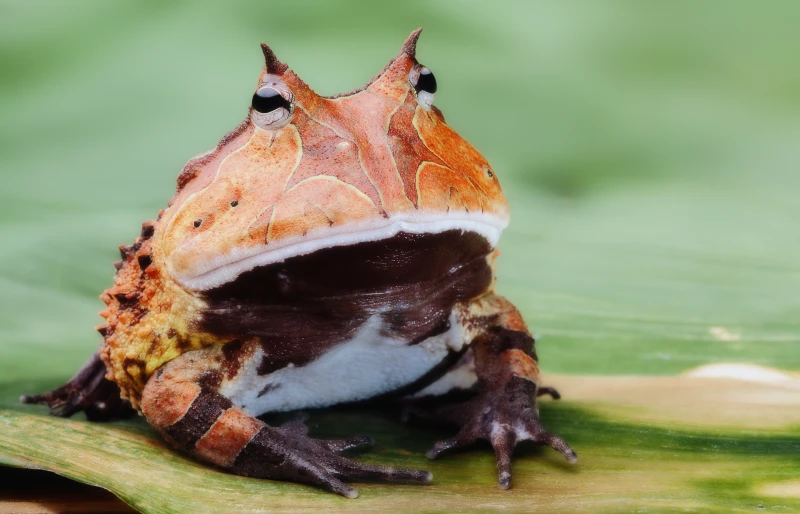
16. Their Poison Can Be Used in Treating Cancer
This hasn’t been properly tested yet and needs further research. However it is believed that the poison released by cane toads through the wart-like spots on their bodies can be used as medicine. More specifically, it can attack cancer cells and destroy them without damaging the “good” cells in a human’s body. This isn’t a new practice by any standards, though.
The Chinese have been using toad poison for a while now. They use it to lower the risks of heart failure, treat various skin conditions, and help with a sore throat. We just learned that cane toads are turning into a nuisance in Australia. Well, with luck, this study can prove them to be a useful tool in fighting cancer!

Are Toads and Frogs the Same?
Technically, yes: biologists don’t differentiate between these two creatures. Still, toads have unique traits and features that set them apart from “regular” frogs. They have dry, rough, and leathery skin and don’t like to be in water nearly as much as frogs do. Secondly, their legs are shorter and not as well-developed. To compensate for that, these amphibians have larger, more powerful bodies.
They prefer to hop and walk instead of jumping. And let’s not forget about the parotid glands: toads use them to release hazardous bufotoxins into the atmosphere and deter predators. Some frogs have them as well, yet they’re not nearly as common. Lastly, toads have fewer predators compared to frogs.
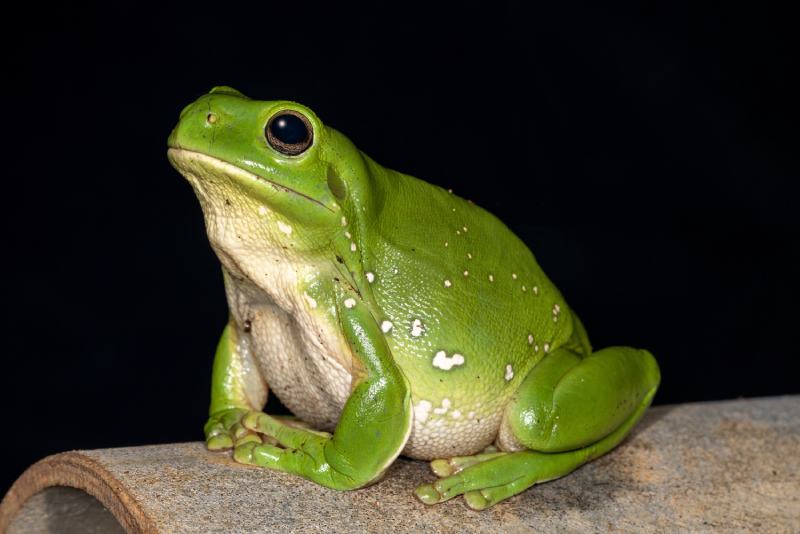
Do Toads Make Good Pets? How Long Do They Live?
In the wilderness, the average lifespan for a toad is 3–10 years. But they can live two or even three times longer than domestic animals. However, that doesn’t mean toads are low-maintenance pets. First, they don’t like to be picked or cuddled. Next, you’ll have to create the right environment for them to live in. If you’re a fan of amphibians and prefer to observe your pets rather than get cuddly with them, toads will be a great pick.
Do remember, though, that they release toxins and carry diseases. So, again, always wash your hands before and after picking them. Here’s the 101 on how to care for a toad:
- Get a spacious, ventilated container/terrarium for the pet
- Talk to a vet about the perfect substrate for the toad
- Make sure the bud has quick access to hiding spots
- The same goes for access to fresh water (change it daily)
- Keep the temperature in the room in the 60–70°F range
- As for humidity, 50–60% is ideal for toads; above 70% can be dangerous
- Feed the toad wax/mealworms, crickets, and other live insects
- Fruits and veggies are also allowed but in small portions
- Remove the toad’s waste 2–3 times a week to keep it clean
- Resist the urge to pick the toad all the time and play with it

Conclusion
Toads aren’t the cutest pets out there. But although they might look a bit gross, these buds are a mighty bunch. Toads rely heavily on their long, sticky tongues, poisonous bodies, and calculated hops to hunt prey and escape from predators like snakes. They’re smart, resourceful, and know exactly how to survive in harsh environments.
However, if you want to adopt a toad, do keep in mind that they’re not easy to care for. While you can, of course, get one, you’ll need to put in a lot of effort to keep it happy. These amphibians are used to living in the wilderness and taking care of their own. They’ve been doing it for millions of years!
Featured Image Credit: Cimabue, Pixabay
